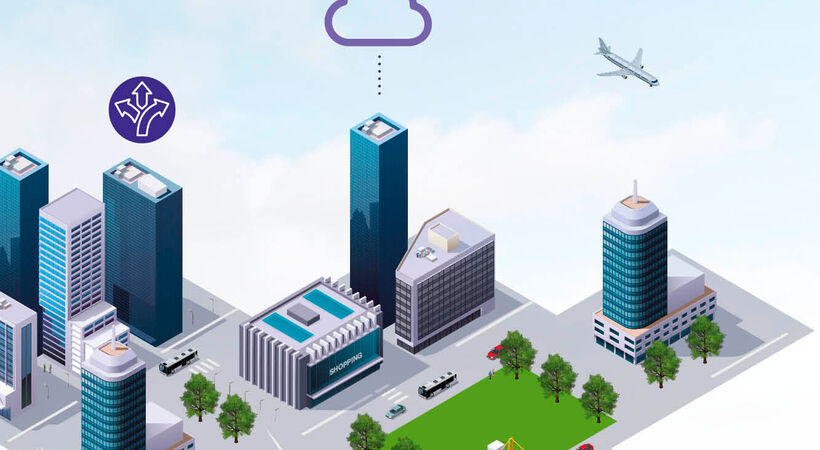Simon Blazey from Tridonic argues that it is only now with the advancements in Smart technologies and lighting that buildings can finally really have a management system at their helm.
For hundreds of years the only means of managing the environment within a building would have been to open or close the doors and windows, light a candle or stoke up the fire. However, in the latter half of the 20th century we started to see developments in technology and automation applied to the management of commercial buildings, be they for commercial or leisure use. Key players in this relatively new field were companies like Honeywell, Landis & Gyr, Satchwell and Siemens, and it was them that coined the phrase BMS; Building Management System, for the solutions that they were offering to the construction Industry and end users of the day. But was that name really a true reflection of what they were offering? I would suggest that building management was not what was on offer and that building monitoring would be a far more accurate description. Some greater cynics would even go as far to call it a very expensive electronic time clock.
Jump forward to the modern day and a comprehensive, interactive, value enhancing building management system is no longer a hypothetical dream but a very real option that can empower facilities managers, building owners and their tenants to not only have a far greater understanding of how a building is performing, but also provide insight into how it is being used and thirdly, and possibly the most exciting, provide new and hitherto unexplored business opportunities.
When designers and developers have wanted integration and interoperability from building systems in the past they have been hampered by silo systems, protocols and gateways. These so-called silo systems would have included individually designed, wired and installed systems for the telephones, lighting, access, CCTV and security, hence the spaghetti like mass of cables and wiring that is still found today in the ceiling void of the vast majority of our buildings. The level of complexity of each of these discrete systems would be variable and to some extent dependent on how the space was going to be used. The so called BMS would be another stand-alone network, linked to contact points including thermostats and ventilation controls and would allow a basic level of monitoring and consequently adjustment and control of the environmental factors on perhaps a floor by floor basis.
Now, over 50 years from their inception and with the reality of the Internet of Things (IoT), BMS will finally be able to truly deliver on its name. Key to this reality is the single converged IP network and the best way to transition to this format is via lighting because of its ubiquitous presence, installation and its ability to offer a low power wireless mesh network for communication. This in turn provides the backbone for the digital connected ceiling. When lighting is the IP infrastructure is allows constrained IoT devices to reach their service application through the lighting. By using an IPV6 solution, luminaire manufacturers have the ability to customise their luminaires and embrace IP and IoT technology, taking lighting beyond illumination and offering huge potential and benefits to new stakeholders. This digital connected ceiling allows traditional BMS devices and other systems to either co exist or interoperate with each other without the need of a bridging gateway.
The Internet of Things is a massive opportunity for all who provide building system solutions, with 40% of IoT expected to be in commercial buildings. It is estimated that the revenue streams that could be generated as a result of new business models, services and solutions will earn up to five times more through services compared with the initial product sale. However to makes these revenues a reality is going to require a new approach from consultants, contractors and clients to planning, procurement and partnership.
Pilot projects will be the first stage of procurement and the focus throughout will be on whether the project is evolving towards the final goal ie achieving the client's outcomes. At the same time all parties will need to bear in mind the physical environment and how the users will interact with the installed technology. End users embracing these pilot projects will be able to incubate ideas, analyse data and start to really understand not only how tenants will demand and use office space in the future. If these pilot schemes start to deliver data of real value then that surely will be the time when we can finally use and attribute, with true conviction, the phrase 'building management system' to the unseen technology that is hidden in the digital ceilings and luminaires of the 21st century.







